This article is reviewed, corrected, and approved by: Dr. Joshua Collins M.D. | MRCP। FRCP
Chicken pox scars are marks or scars on the skin that remain after a person has recovered from chickenpox. Infection with chickenpox leads to itchy blisters on the skin that are highly contagious. While most people recover from chickenpox without any long-term effects, some individuals may be left with scars on their skin due to the healing process.
Chickenpox scars can vary in appearance, ranging from small indentations or pits to large, raised scars that may be discolored or uneven in texture. Most commonly, these scars appear on the face, neck, chest, or even chicken pox on eyelid, which are also common nowadays. It can appear anywhere on the body.
How Do Chicken Pox Scars Form?
Chicken pox scars are formed as a result of the healing process that occurs after the chickenpox blisters have burst or dried up. At the time of the affected area healing, scar tissue left some trace, and later it forms a scar.
Open wounds from chickenpox blisters can become infected; collagen fibers and new skin cells repair the wound. Skin scarring can be caused by excessive or insufficient production of collagen. Depending on the size, depth, and specific body area of the wound, as well as the type of skin and the healing rate, the scar will appear differently.
The Prevalence of Chicken Pox Scars
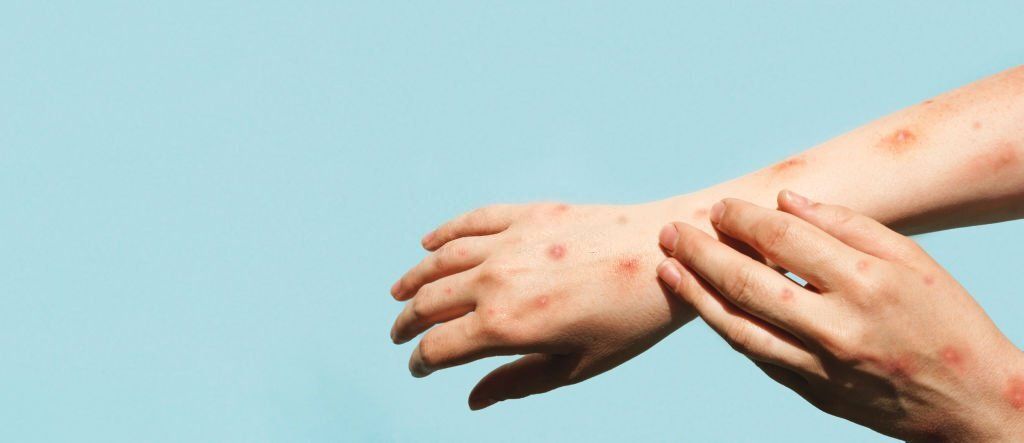
Getting scars from chicken pox can be more or less common, depending on how bad the infection was, how old the person was when it hit, and what kind of skin the person has. It is estimated that up to 30-70% of people who have had chickenpox may develop scars.
You may ask how common chickenpox is; then the answer is it’s a very common virus infection. You may see many famous celebrities with chicken pox scars. Besides, people who scratch their chickenpox blisters may be more likely to develop scars like acne scars.
Chickenpox scars can be particularly common in individuals who have severe cases of chickenpox, those who are immunocompromised, or those who did not receive timely treatment for their chickenpox blisters.
Why Are Some People More Prone to Scarring?
Scarring affects people differently and in different ways. These factors can include the following:
- Genetics: Some people may inherit a tendency to scars easily. This is because certain genes may affect the body's healing process or the production of collagen, which can influence the formation of scars.
- Age: Younger individuals (such as kids) are generally more prone to scars than older people. People with weak immune systems and who have thinner and more sensitive skin are more prone to scar than others.
- Skin type: Individuals with certain skin types, such as those with darker skin or oily skin, may be more prone to scarring. This is because their skin may produce more collagen or melanin, which can cause scars to appear more prominent or darker in color.
- The severity of the chickenpox infection: People who have had severe chickenpox cases or scratched their chickenpox blisters excessively may be more prone to atrophic scarring.
- Delayed or inadequate treatment: If chickenpox blisters are not treated promptly or correctly, it can increase the risk of scarring. Similarly, if scars are not properly cared for during the healing process, they may become more noticeable or prominent.
Factors That May Influence Scars
Here are some other factors which might influence scars
- Wound diameter and depth.
- Body parts affected by the wound.
- The wounded area was infected or inflamed.
- The use of certain medications (e.g., steroids) can affect collagen production.
- The healing process is slowed by smoking, according to various research.
- Exposure to sunlight can darken scars and make them more noticeable.
- Wrong wound care or removing scabs before they fall away.
- Healing wounds that are re-injured.
Types of Chicken Pox Scars
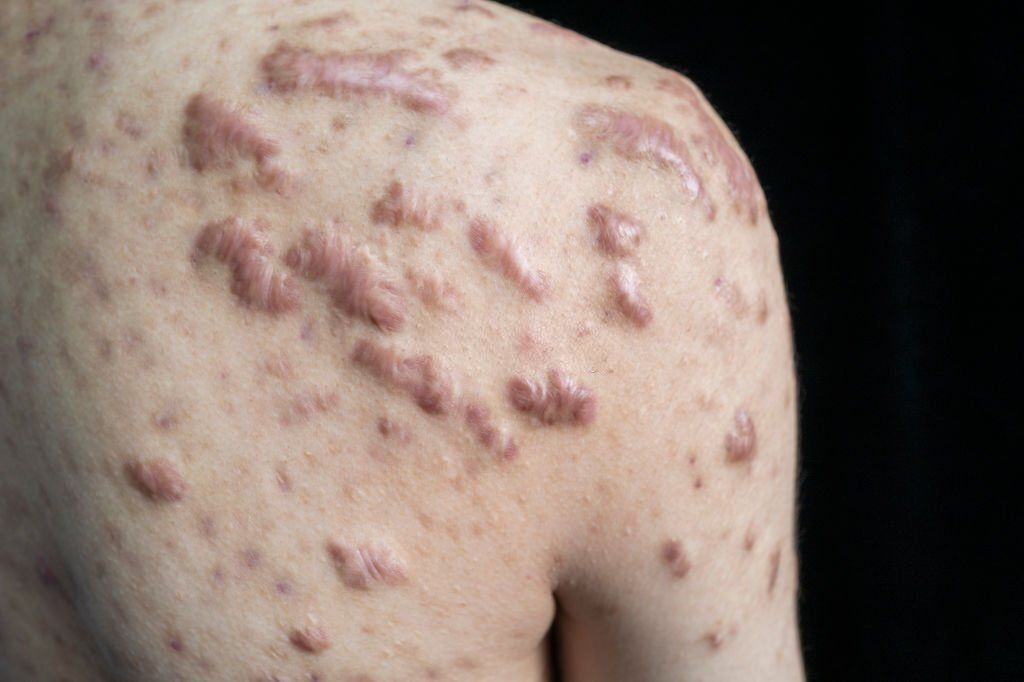
Several types of chickenpox scars can form after a person has recovered from the virus. Individuals' skin type and healing ability will affect the appearance of the scar, and the size and depth of the wound will also affect how the scar looks. The most common chicken pox scars types are listed below:
- Atrophic scars: These are shallow, depressed scars that appear as small indentations or pits in the skin, like acne scarring. Also known as sunken scars. There are several types of atrophic scarring associated with chicken pox. Several atrophic scars treatment options are also available out there.
- Hypertrophic scars: These are raised, thick scars that may be red or discolored. Hypertrophic scars can be itchy or painful and take longer to heal than atrophic scars.
- Keloid scars: The scars are similar to hypertrophic scars, but these stretch or spread beyond the wound's original boundaries. Scars with keloid growth are more common in darker skin.
- Ice pick scars: It is also known as pitted scars. Scars like these types are deep, narrow holes that look like little pits in the skin. Ice pick scars are often difficult to treat and may require multiple scar treatment options to reduce their appearance.
- Boxcar scars: In these types of scars, there is a deep, narrow hole in the skin that looks like a pit. Boxcar scars are often wider than ice-pick scars and can appear as a depressed, angular shape.
Chickenpox scars vary in appearance depending on the severity of the underlying infection, such as the patient's skin type, the care given to the wounds during the healing process, etc.
Treatment Options for Reducing or Eliminating Chicken Pox Scars
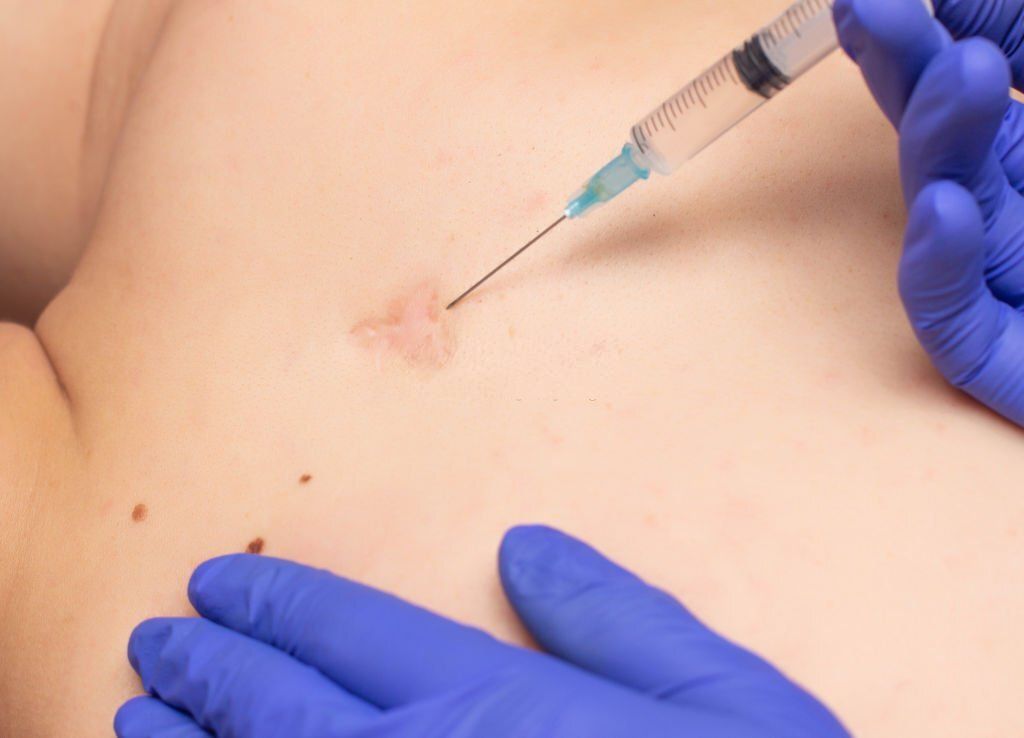
Several treatment options are available to reduce or eliminate the appearance of chicken pox scar. Individuals' skin types, healing abilities, and the severity of their scars will determine what type of treatment they should receive. Here are some common treatment options for chicken pox scars:
- Chemical peels: When a chemical peel is applied to the scar, the top layer of skin peels off (For example, trichloroacetic acid).
- Microdermabrasion: An exfoliating machine is used to remove dead skin cells from the skin. Microdermabrasion can minimize scarring and improve the texture of the skin.
- Glycolic Acid Combination: Glycolic acid is an (AHA) that has dual functions in skin care as an exfoliator and as a cell promoter.
- Injections: The appearance of scars can be reduced with injections such as collagen or corticosteroids.
Moreover, the severity of the scar may require additional treatments to remove. Or other surgical procedures might need skin grafting. The best course of action is to determine the right therapy for each individual by speaking with a skin specialist.
Remedies and Treatment for Chickenpox Scars
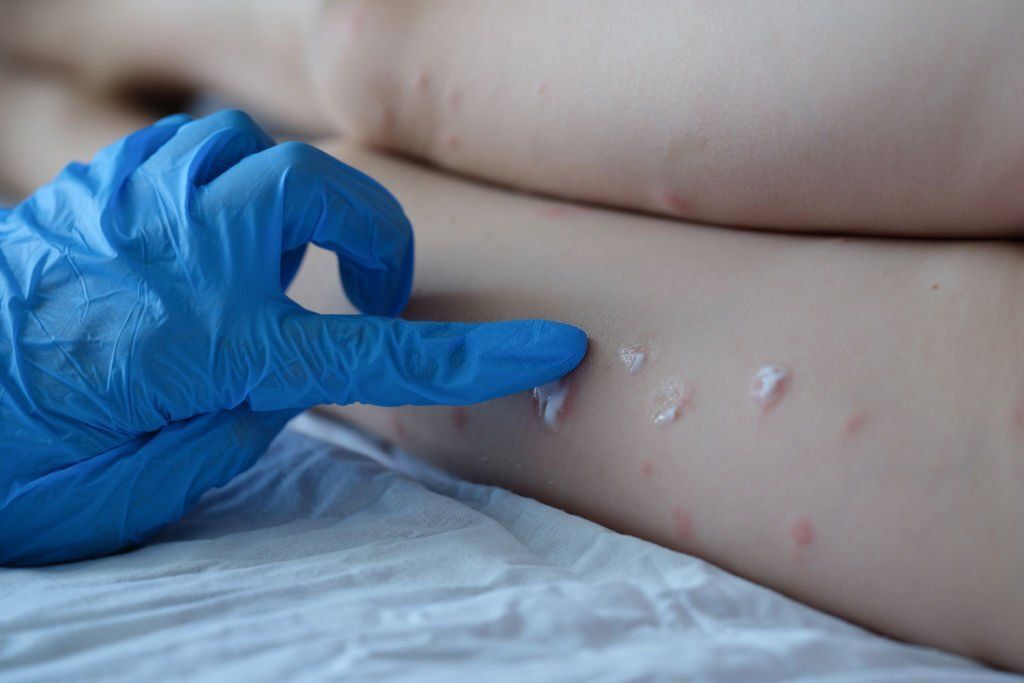
However, in most cases, scars aren’t permanent, but for some people, it’s hard to get off scars. Here are some examples of topical treatments, invasive treatments, and natural remedies that can be used to reduce or eliminate chicken pox scarring:
Topical Treatments
- Silicone sheets or gels: These can be applied to the scar to help flatten and reduce its appearance.
- Vitamin C serums: Vitamin C help stimulate collagen production and improve texture from the deeper layer of the skin.
- Retinoid creams: There are a lot of chickenpox scar removal creams available on the market to remove chickenpox scars and prevent chickenpox scars. These creams promote cell turnover and enhance the quality of the skin, thereby reducing the visibility of scars.
Invasive Treatments
- Chemical peels: As mentioned earlier, this treatment involves applying a solution to the scar that makes the skin's outer layer tear off.
- Microdermabrasion: In microdermabrasion, a specialized machine is used to exfoliate the upper layer of dead skin cells
- Laser therapy: In order to reduce scarring and encourage collagen growth, this therapy directs a laser beam at the affected area.
Natural Remedies
- Aloe vera: It's also a natural gel that has anti-inflammatory and skin-healing properties.
- Honey: When honey is applied to a scar, it speeds healing and decreases redness.
- Lemon juice: The natural acids in lemon juice can help lighten scars and improve the skin's texture.
- Coconut oil: This natural oil can help moisturize and improve the texture of the skin.
To ensure the best possible outcome and avoid any potential risks, it's important to seek guidance from a physician or dermatologist prior to attempting new treatments. You can get rid of scars easily and safely through professional treatments.
Tips For Preventing Chicken Pox Scars
The ideal approach to dealing with chickenpox scars is to avert their formation altogether. Seeking prevention strategies can help individuals avoid the undesirable effects of these scars. Here are some tips that may help reduce the risk of scarring during the chicken pox healing process:
- Avoid scratching: The most important step to prevent scarring is to avoid scratching the chicken pox blisters. Scratching can be particularly harmful because it can leave scars on the skin.
- Keep the skin clean: When recovering from chicken pox, it is necessary to maintain a clean skin environment. Washing the affected area with water and a light soap can help to keep it clean, which in turn speeds up the healing process.
- Moisturize the skin: For optimal healing and hydration of the skin in the affected area, it is recommended to use a soothing moisturizer.
- Avoid sunlight: Exposure to sunlight can cause hyperpigmentation and increase the risk of scarring. You should wear protective gear and stay out of direct sunlight when going outside.
- Consult a healthcare provider: If the chicken pox blisters are large, painful, or do not heal on their own, it is important to seek medical attention.
A dermatologist may prescribe medicine or suggest alternative treatments to lessen the likelihood of scarring. To avoid chickenpox scars, it's better to take preventive measures rather than treat them later. Ensure to take the necessary steps to prevent chickenpox scar formation.
Strategies For Minimizing the Appearance of Scars
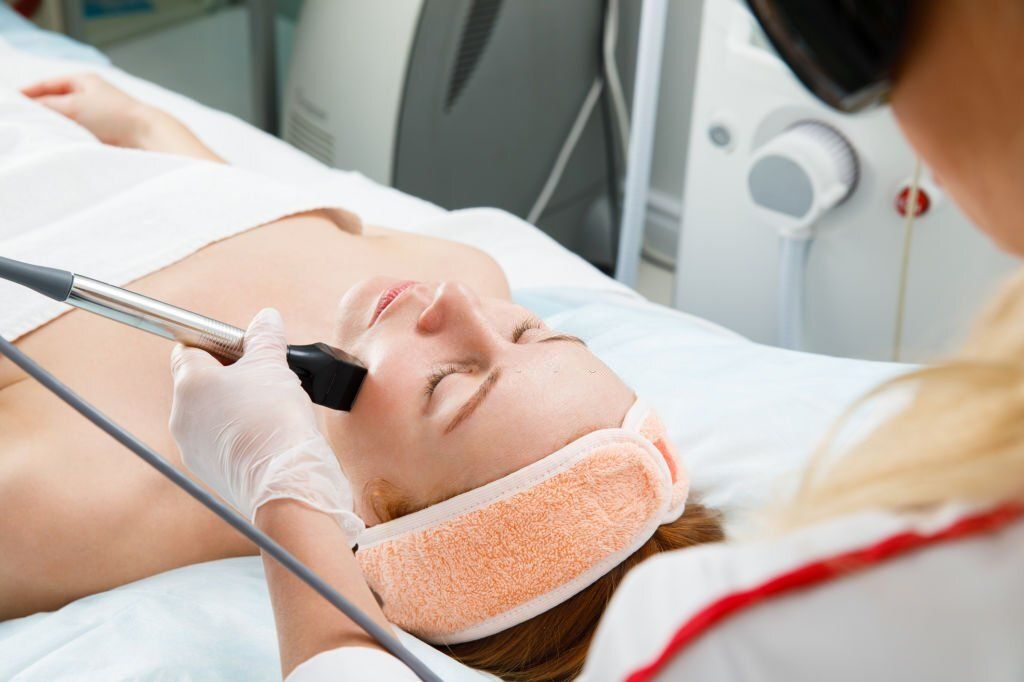
If chicken pox scars do form, several strategies can be used to minimize their appearance:
- Laser treatment: Laser, considered an effective treatment, involves using a focused beam of light to target the scar tissue and stimulate collagen production. As a result, this may be useful for erasing scars from the skin.
- Topical treatments: Topical treatments such as silicone sheets or gels, vitamin C serums, and retinoid creams can be applied directly to the scar to help flatten and reduce its appearance.
- Makeup: Certain types of makeup are used to cover facial scars. As concealer or color-correcting products can be used to cover up scars and reduce their visibility.
- Scar massage: Massaging the scar can help break up scar tissue and improve the skin's overall texture.
Sometimes scars cannot be completely removed, and it may take time and many treatments before you see improvements. If you are considering therapy, you should consult with a dermatologist to inform yourself of available options.
Conclusion
Finally, chicken pox scars can be a frustrating and unpleasant side effect of the chicken pox virus. It is not always possible to prevent scars; to minimize the risk of scarring during the wound healing process, there are several effective courses of action that can be taken. Chickenpox scars can also be reduced or eliminated using topical treatments, invasive procedures, and natural remedies.
If you have scars on your body and would like them removed, you may have a few alternatives available. People have different treatment preferences; also, each immunological function varies from person to person.
While a treatment or medication may work for you, it may not be suitable for someone else. That's why you should contact a dermatologist before taking any medication or beginning any treatment.
Frequently Asked Questions (F.A.Q)
Q: Are chicken pox contagious?
Ans: Yes, chickenpox is a highly contagious virus infection
Q: What does chicken pox look like
Ans: Chickenpox looks like small, red, itchy bumps on the skin.
Q: How many days does chickenpox last?
Ans: Chickenpox usually lasts between 7 and 10 days, but this time frame can vary widely from person to person
Q: Can I take a bath when I get infected with chickenpox?
Ans: Taking a bath or shower with light warm water during infection with chickenpox is safe.
Q: Why is it called chicken pox
Ans: It is believed that the name "chickenpox" comes from the Latin word "cicer", which means "chickpea."
Q: What is chicken pox in Spanish?
Ans: "Vicella" is the Spanish word for chickenpox.
Q: How to get rid of ice pick scars?
Ans: Ice pick scars are deep, narrow scars, often from severe acne or chickenpox. You can get rid of ice pick scars or pitted scars using the following treatments: Laser resurfacing, microneedling, using dermal fillers, chemical peels, subcision.
Q: Does cocoa butter help scars?
Ans: Many skincare products use cocoa butter to cure scars. Cocoa butter may hydrate and nourish skin, but it has not been shown to reduce scars


